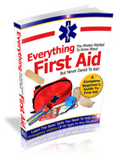Welcome to lacerations Guide
Torso Lacerations Article
 To bookmark this article for further reading, click here.
To bookmark this article for further reading, click here.
In The Medical Record: Pictures Of Lacerations Of The Tongue
Pictures of lacerations of the tongue can be found on the internet and in medical books, and even in a patient’s medical record. Lacerations of the tongue can result from falls, blunt force trauma, bites from seizure activity, and automobile accidents.
You can go to a search engine and pull up pictures of lacerations of the tongue; very often these injuries occur in children as a result of running into something or falling.
The tongue has many nerve endings, so if you accidentally bite your tongue, you feel intense pain. Depending on the severity of the bite there may also be bleeding.
Most accidental bites to the tongue don’t require medical intervention; however if a child takes a bad fall, or collides with a stationary object, there may be a deep laceration of the tongue.
All doctors do not agree on how to treat lacerations of the tongue. Pictures of lacerations of the tongue show injuries that are large enough to require stitches, yet many doctors feel it is better to let the tongue heal without suturing.
The tongue is naturally a very vascular organ, so pictures of lacerations of the tongue may be very difficult to look at, but the good news is, the tongue heals relatively quickly.
When looking at some pictures of lacerations of the tongue, you might wonder if such wounds would interfere with talking and eating. In some instances, a doctor may decide to suture the laceration of the tongue to keep food debris out of the wound.
Whether sutured or not, there area may be irritated by the patient constantly rubbing his/her tongue against the roof of the mouth.
Pictures of lacerations of the tongue show that some very severe injuries are left to heal on their own. The tongue is an amazing organ that can repair itself; lacerations of the tongue can result accidents and seizure activity.
It is not advised to insert any object into the mouth during seizure activity. The seizure will not cause the patient to swallow his/her tongue. Most chewing or biting during a seizure is not usually serious.
Many people experience an aura before having a seizure, which may be a perceived sound or light; the aura signals that a seizure is eminent. As soon as the aura is perceived, seizure patients should lie down in an area free of objects that could cause injury.
In cases of trauma such as in an automobile accident, pictures of lacerations of the tongue may show deep dissections from a bite driven by impact. The laceration of the tongue may be severe enough to hemorrhage.
Hemorrhaging within the mouth can be life threatening by threatening the airway or by causing hypovolemic shock. The very first priority in emergency management of hemorrhage caused from lacerations of the tongue is to maintain a patent airway.
Depending on whether the victim is a child or adult will depend on the rescue techniques.
Babies and children have a slightly different anatomical structure of the larynx than adults. A child’s larynx is higher and more to the front than an adult’s is; therefore, hyperextending the neck of a child to maintain an open airway may just do the opposite and occlude the airway.
Children are more likely to suffer from an obstruction from blunt force mouth trauma from an accident that causes aspiration of blood. The tongue of children and adults is so vascular that a severe laceration could become a medical emergency.
One can assume by looking at pictures of lacerations of the tongue many were severe enough to need medical intervention. In the event of such a traumatic injury, the medical professional will ask questions to understand what happened to cause the injury.
As part of the medical record, the attending doctor may take pictures of the lacerations of the tongue at the time of injury and during the healing process for reasons of comparison.
The doctor will also check the surrounding tissues of the lip, gums and even the teeth. A tooth could be chipped in an injury causing a deep laceration.
The patient may be advised to get dental care as soon as possible to prevent further injuries to the tongue.


